It has been a challenging year for beekeeping. We came through the winter with nine of our FHT original eleven hives situated up near the Findhorn Wind Park turbines alive and active. However, a poor spring meant that we continued the winter feeding into April. We made a quick inspection in early April and all seemed well. The weather then turned cold again so we refrained from opening the hives to inspect the colonies, just inspecting them through the glass crown boards. We thus failed to notice that two strong colonies had eaten through all their stores. We felt so guilty when we found these two previously strong colonies had died.
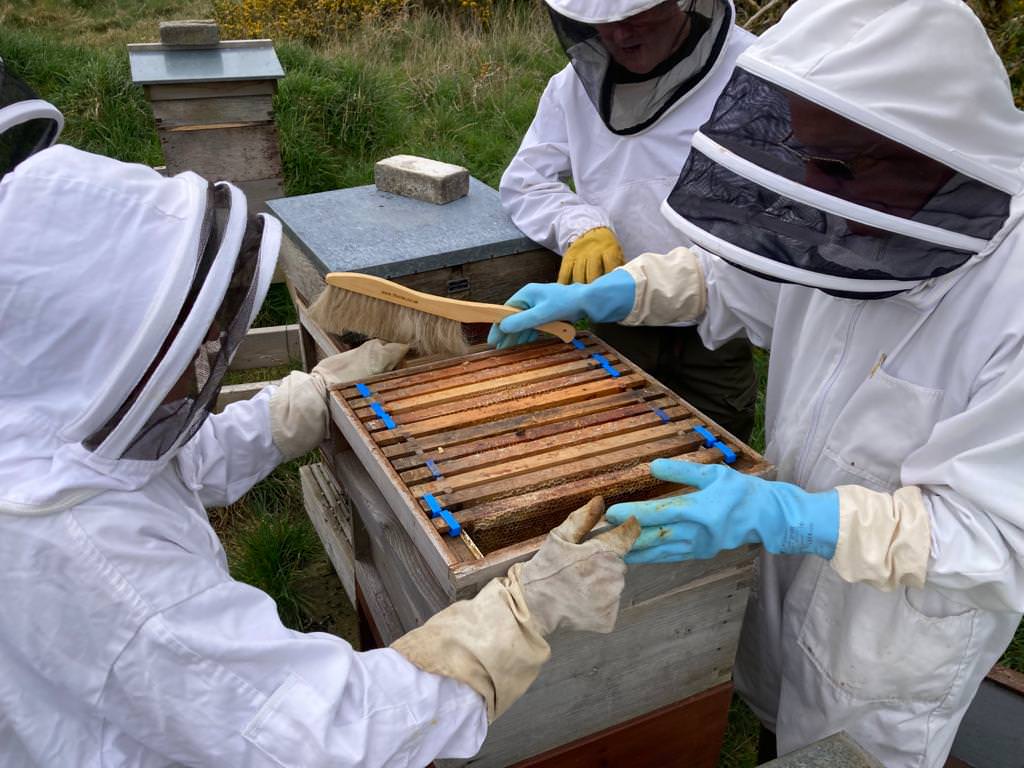
However, things picked up and new queens mated successfully, and we increased the hives to ten with some interesting swarm collections involving tree climbing and other antics! With a lovely hot June we were looking forward to an early honey harvest. Climate change had other ideas. July was awful and, in common with most beekeepers in the area, we found that instead of increasing the honey stores, the bees spent July eating through their stores. By August we were having to feed them, an occurrence that most beekeepers had never experienced.
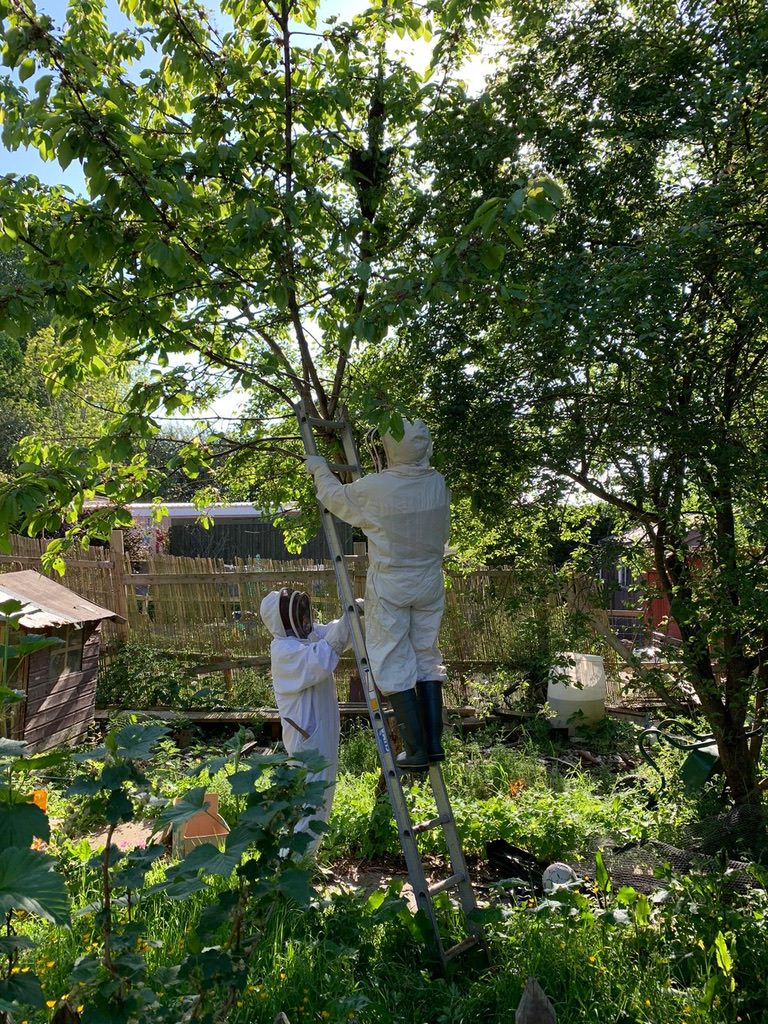
At Findhorn we are fortunate to have both ling and bell heather on the dunes and around the woodland. These were in flower by early August so the bees were happily out foraging, well into September, replenishing their empty larders. The two strongest hives were able to put some honey into the supers for us to obtain a small harvest, but we left most of the honey for their winter feed. So, we enter winter with ten hives, with the bees clustered together keeping the queen warm in the middle at about 33 degrees C, ready to start laying again in early spring. We are ever hopeful for a better year in 2024.
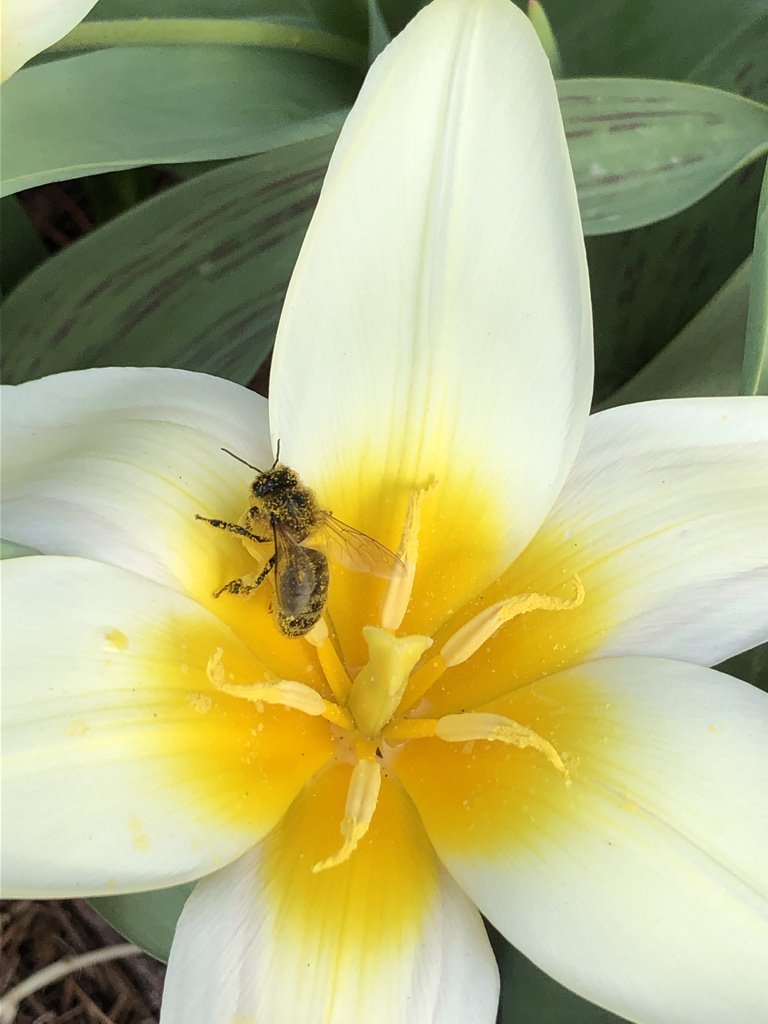
Despite the impression that my account may give, beekeeping is not just about trying to keep the bees alive and hoping for a honey harvest. We can rejoice that over a quarter of a million bees have been roaming the gardens of Findhorn, pollinating the flowers and fruit trees. We have enjoyed the fellowship of the regular inspections, with visitors coming to join us – it has been particularly rewarding to have had a stream of young people come along and join us for some of our sessions. Personally, it is also such a pleasure to work with Jonathan and John, both highly experienced and knowledgeable beekeepers; we enjoy great teamwork.
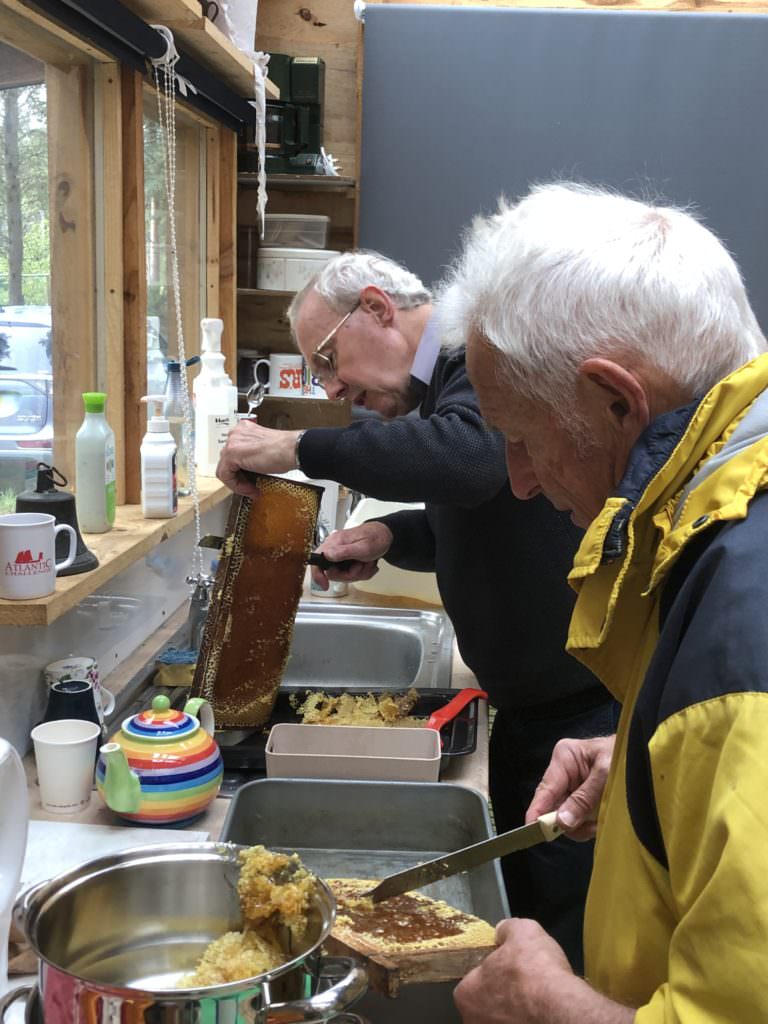
One of the monthly Hinterland work parties helped us to sort out and clean the equipment. The participants had the opportunity to see into some of the hives. When inspections start again next spring we will welcome anyone who would like to join us in exploring the fascinating world of bees.
Martin Harker
Long term Volunteer
and Part of the FHT Core Beekeeping Team
November 2023
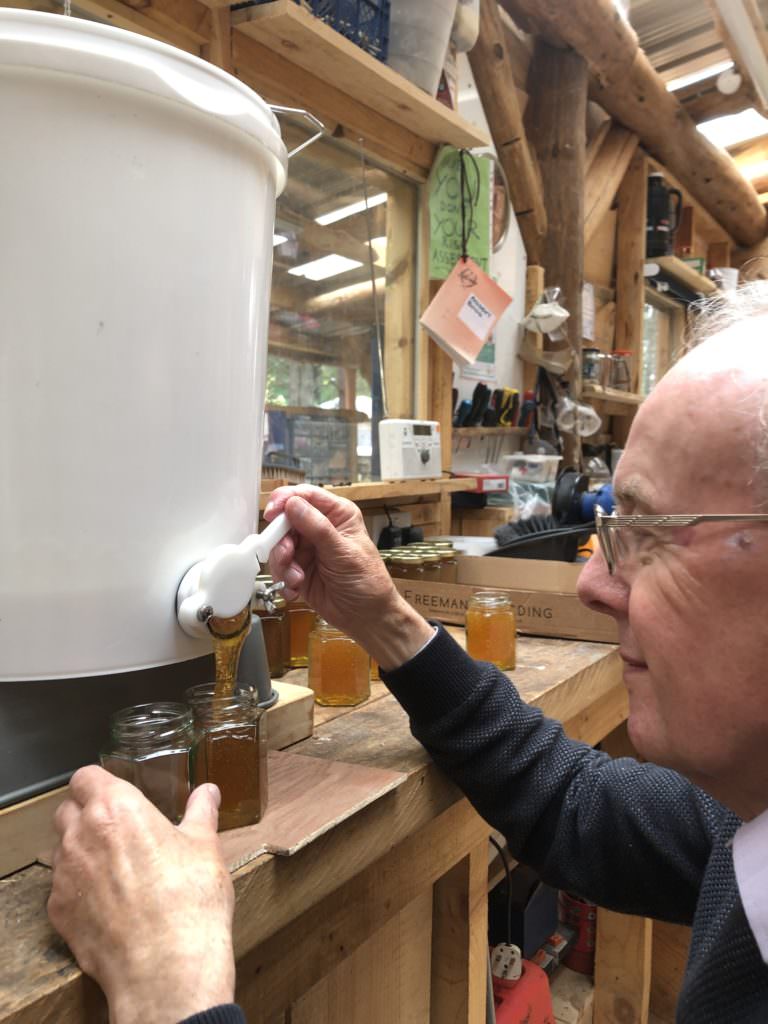

















2023 Beekeeping Report
It has been a challenging year for beekeeping. We came through the winter with nine of our FHT original eleven hives situated up near the Findhorn Wind Park turbines alive and active. However, a poor spring meant that we continued the winter feeding into April. We made a quick inspection in early April and all seemed well. The weather then turned cold again so we refrained from opening the hives to inspect the colonies, just inspecting them through the glass crown boards. We thus failed to notice that two strong colonies had eaten through all their stores. We felt so guilty when we found these two previously strong colonies had died.
However, things picked up and new queens mated successfully, and we increased the hives to ten with some interesting swarm collections involving tree climbing and other antics! With a lovely hot June we were looking forward to an early honey harvest. Climate change had other ideas. July was awful and, in common with most beekeepers in the area, we found that instead of increasing the honey stores, the bees spent July eating through their stores. By August we were having to feed them, an occurrence that most beekeepers had never experienced.
At Findhorn we are fortunate to have both ling and bell heather on the dunes and around the woodland. These were in flower by early August so the bees were happily out foraging, well into September, replenishing their empty larders. The two strongest hives were able to put some honey into the supers for us to obtain a small harvest, but we left most of the honey for their winter feed. So, we enter winter with ten hives, with the bees clustered together keeping the queen warm in the middle at about 33 degrees C, ready to start laying again in early spring. We are ever hopeful for a better year in 2024.
Despite the impression that my account may give, beekeeping is not just about trying to keep the bees alive and hoping for a honey harvest. We can rejoice that over a quarter of a million bees have been roaming the gardens of Findhorn, pollinating the flowers and fruit trees. We have enjoyed the fellowship of the regular inspections, with visitors coming to join us – it has been particularly rewarding to have had a stream of young people come along and join us for some of our sessions. Personally, it is also such a pleasure to work with Jonathan and John, both highly experienced and knowledgeable beekeepers; we enjoy great teamwork.
One of the monthly Hinterland work parties helped us to sort out and clean the equipment. The participants had the opportunity to see into some of the hives. When inspections start again next spring we will welcome anyone who would like to join us in exploring the fascinating world of bees.
Martin Harker
Long term Volunteer
and Part of the FHT Core Beekeeping Team
November 2023